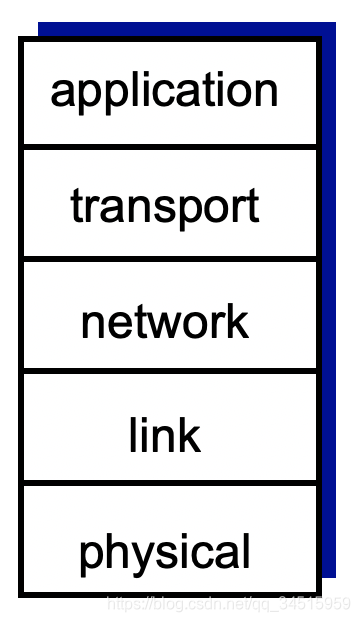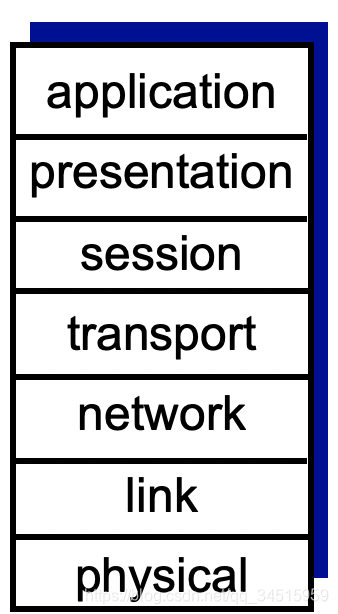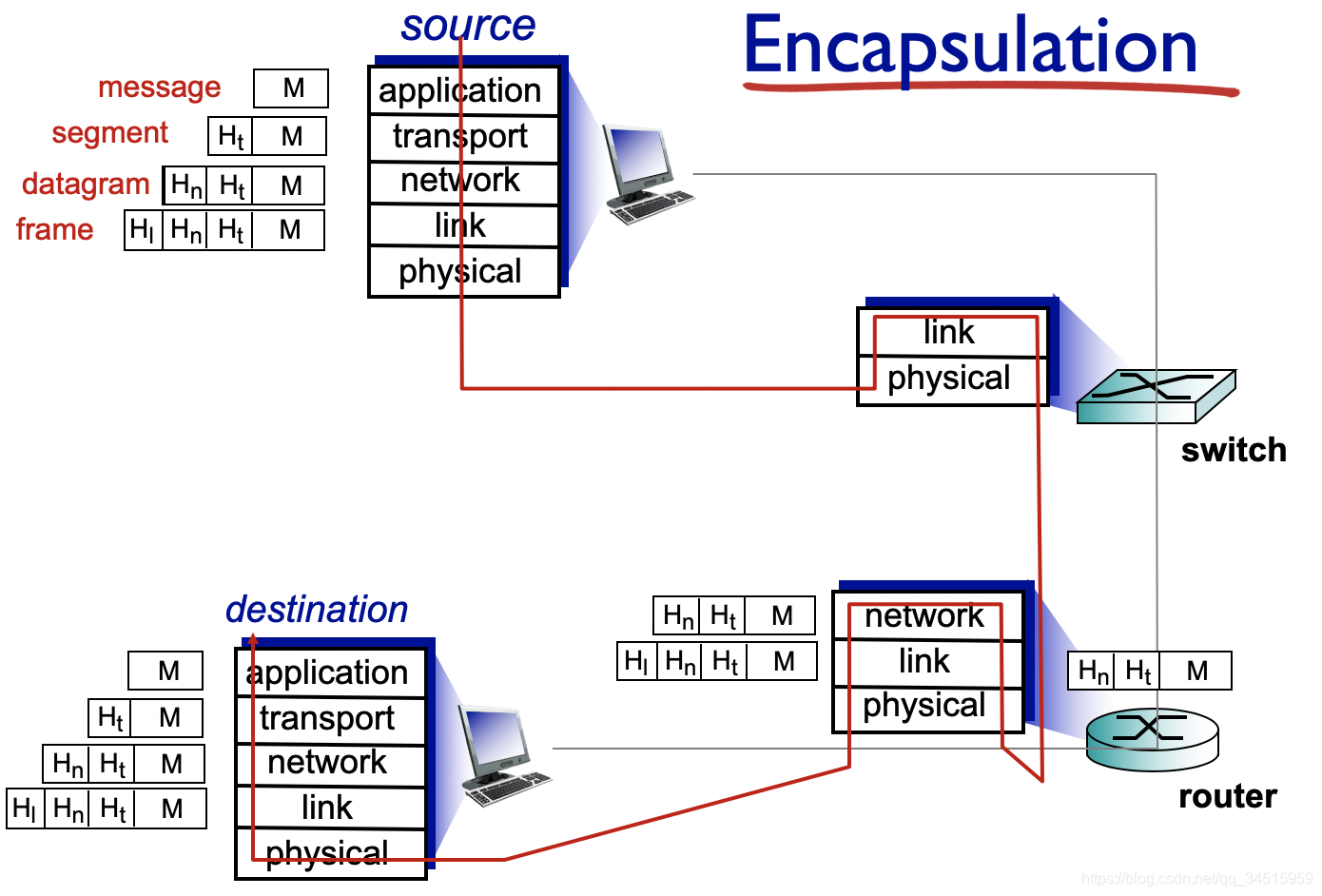Protocol “layers”
Networks are complex since there are many “prices”, such as hosts, routers links of various media, applications, protocols, hardware and software. So, is there any hope for organising structure of network?
-
The concept - “layering”(分层是一种设计思想)
– Each layer implements a service via its own internal-layer actions (protocol) relying on services provided by layer below.
可以理解为"服务是垂直的,协议是水平的"。 -
Why layering?
– Layering is used to deal with complex systems, so the explicit structure allows identification, relationship of complex system’s prices.
– Layering also can be seen as modularisation (模块化) which eases maintenance, updating of system. As well, it makes changes of a layer transparent to rest of system, like change in gate procedure doesn’t affect rest of system.
– But, the layering make the design more complex and inefficient. -
Internet protocol stack(TCP/IP layering)
– Application layer: support network applications, such as FTP, SMTP, HTTP, HTTPs
– Transport layer: processing data transfer, such as TCP, UDP
– Network layer: Routing of datagrams from source to destination, such as IP
– Physical layer: Bits “on the wire”

-
ISO/OSI (International organisation of Standardisation) reference model
– presentation: allow applications to interpret meaning of data, e.g. encryption, compression, machine-specific conversation.
– session: Synchronisation, checkpointing, recovery of data exchange.
– Internet stack lacks those two layers, and these services, if needed, must be implemented in application.

Data encapsulation
- In TCP/IP layering model, from the top to bottom, the data packages become bigger by encapsulating more information in different layers, and this process can be reversed. Encapsulation also is a design thinking, and it hides the information of other layers and stepwise addresses to make data processing easier.
- Data packages have own name in different layer, such as message in the application layer, segment in transport layer, datagram in network layer, frame in the link layer and bit on the physical layer.
- In Internet, the implementation of protocol layers are different in devices.

References
Sildes of Computer Networking, A Top-Down Approach